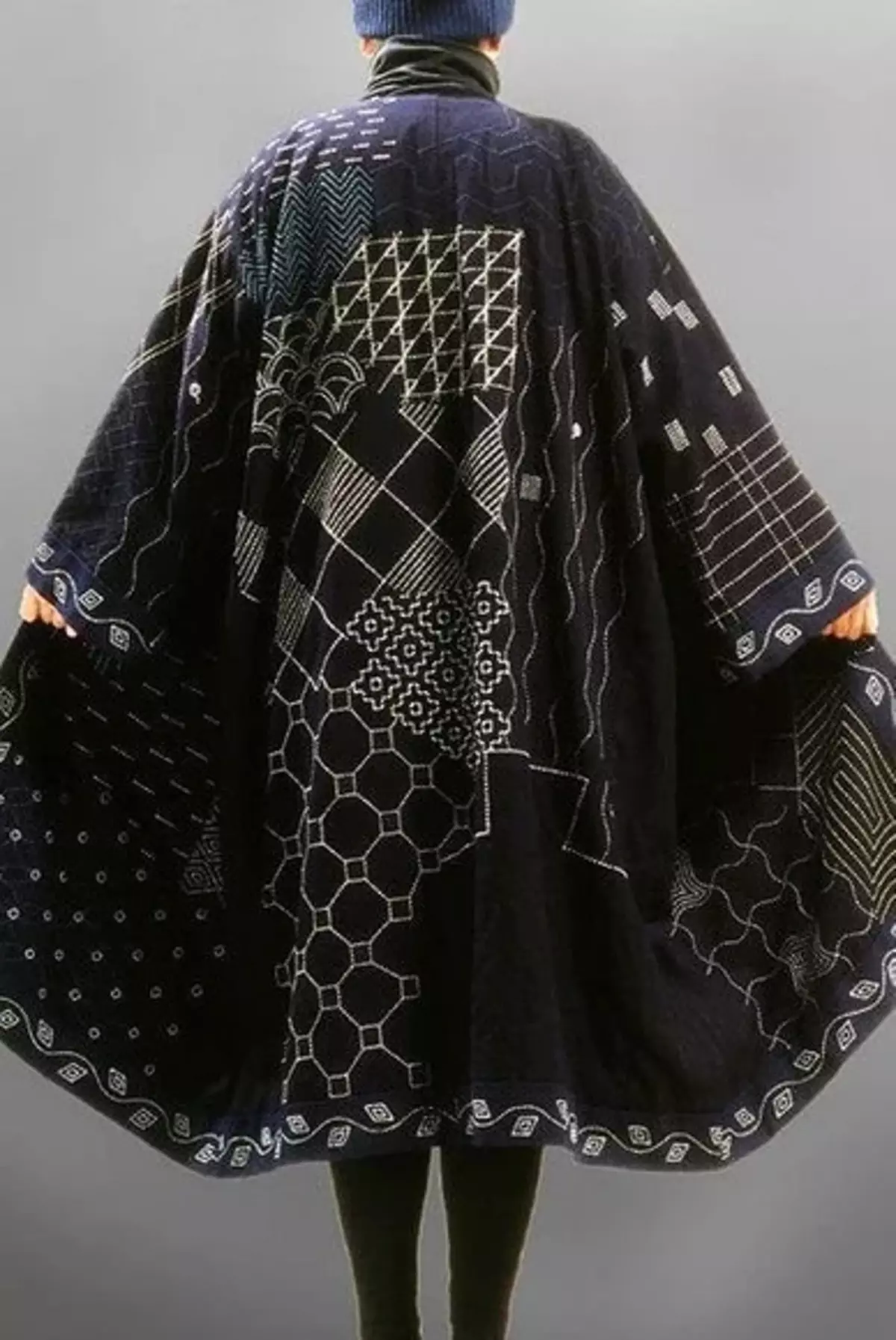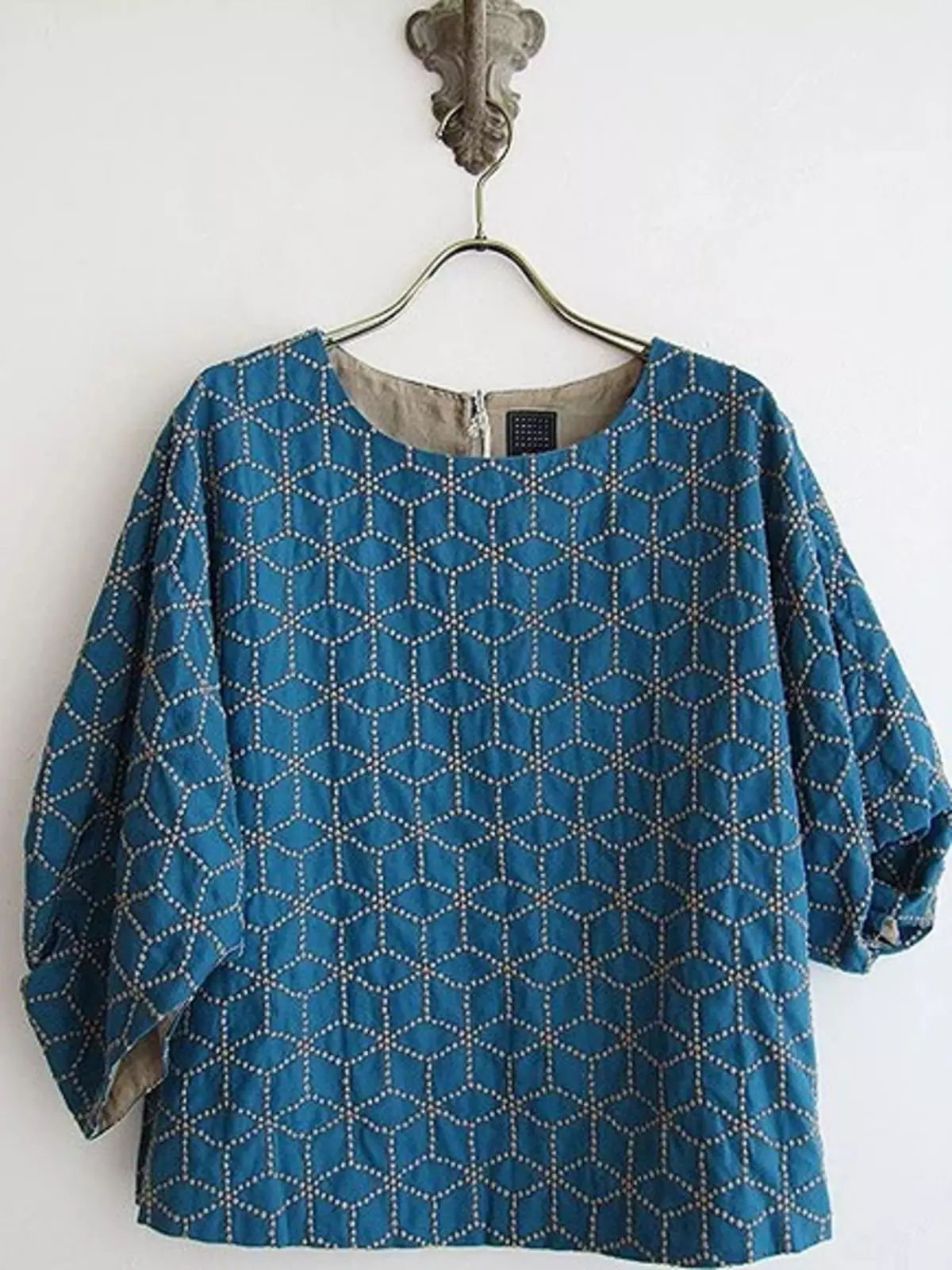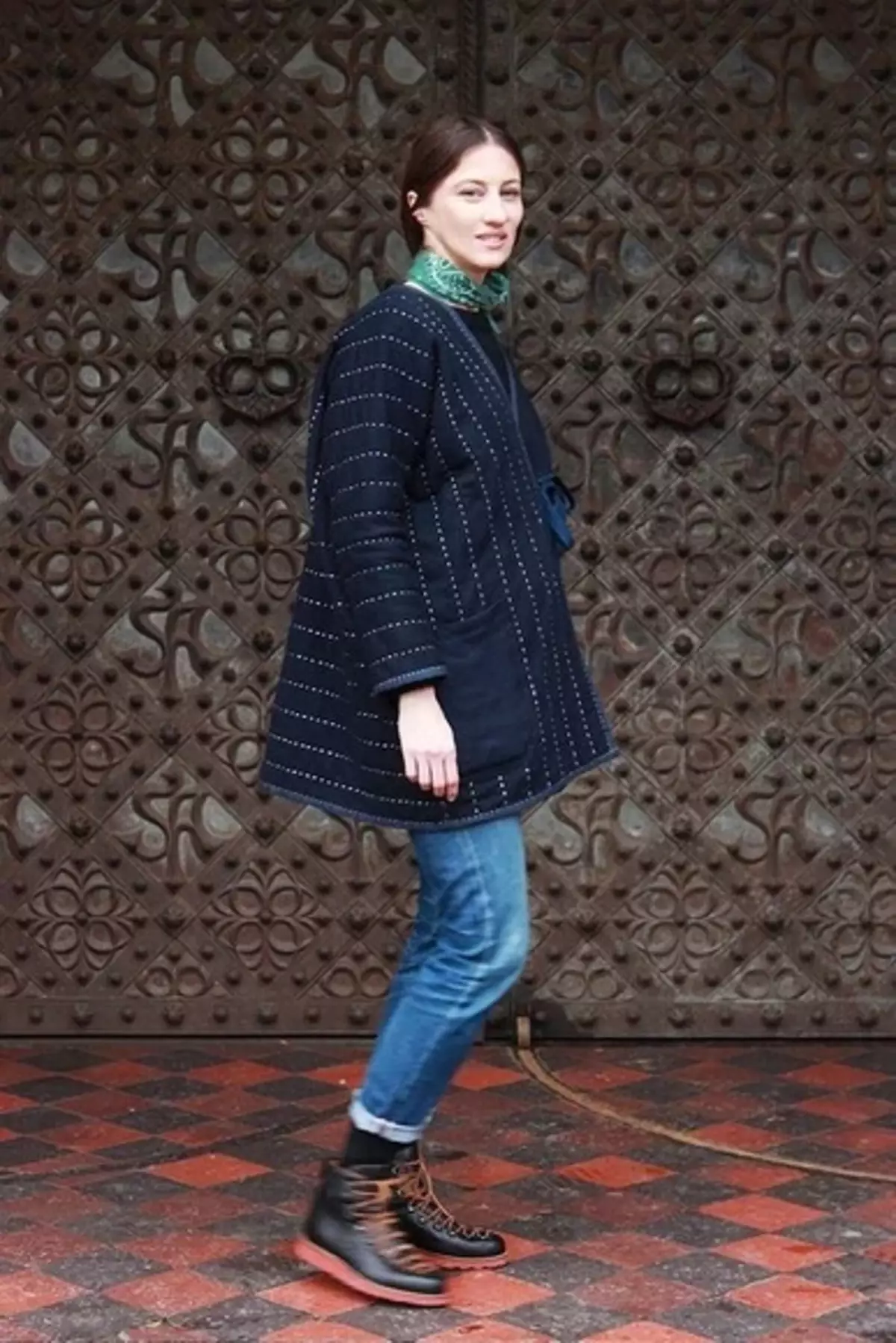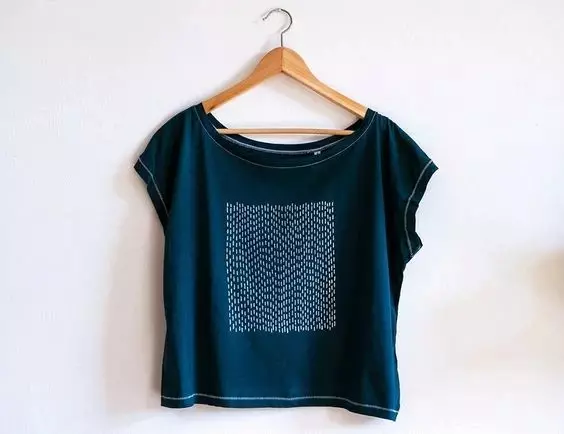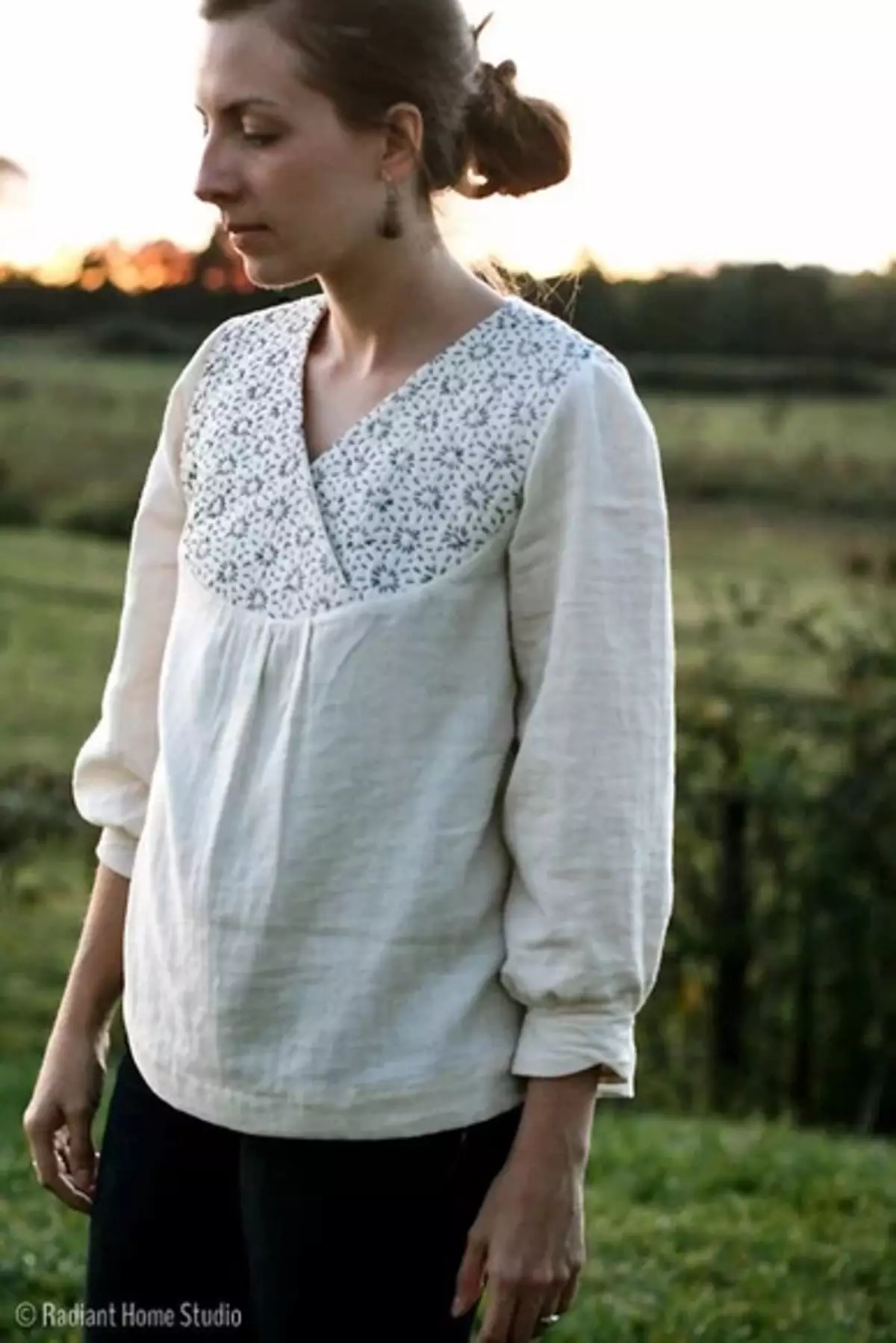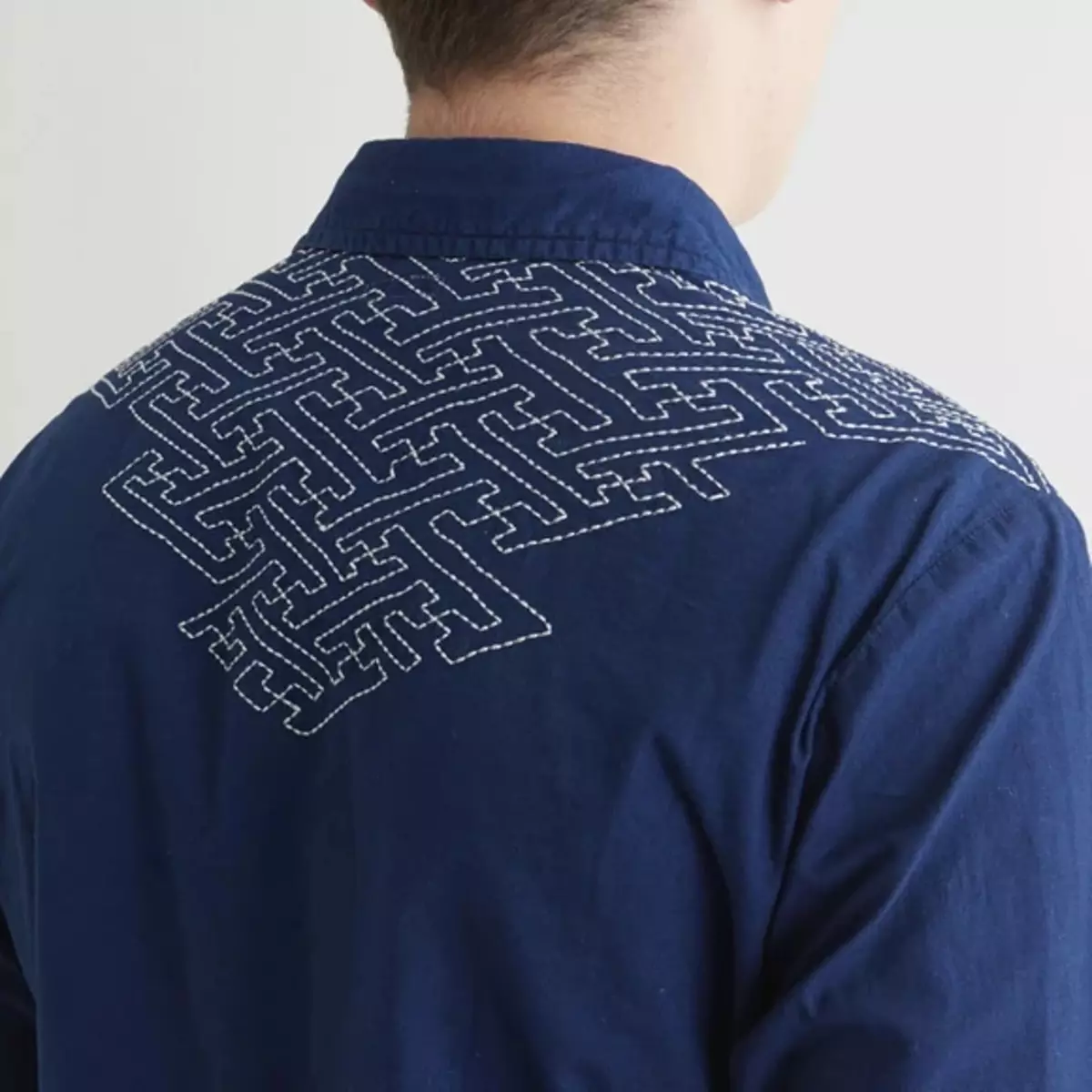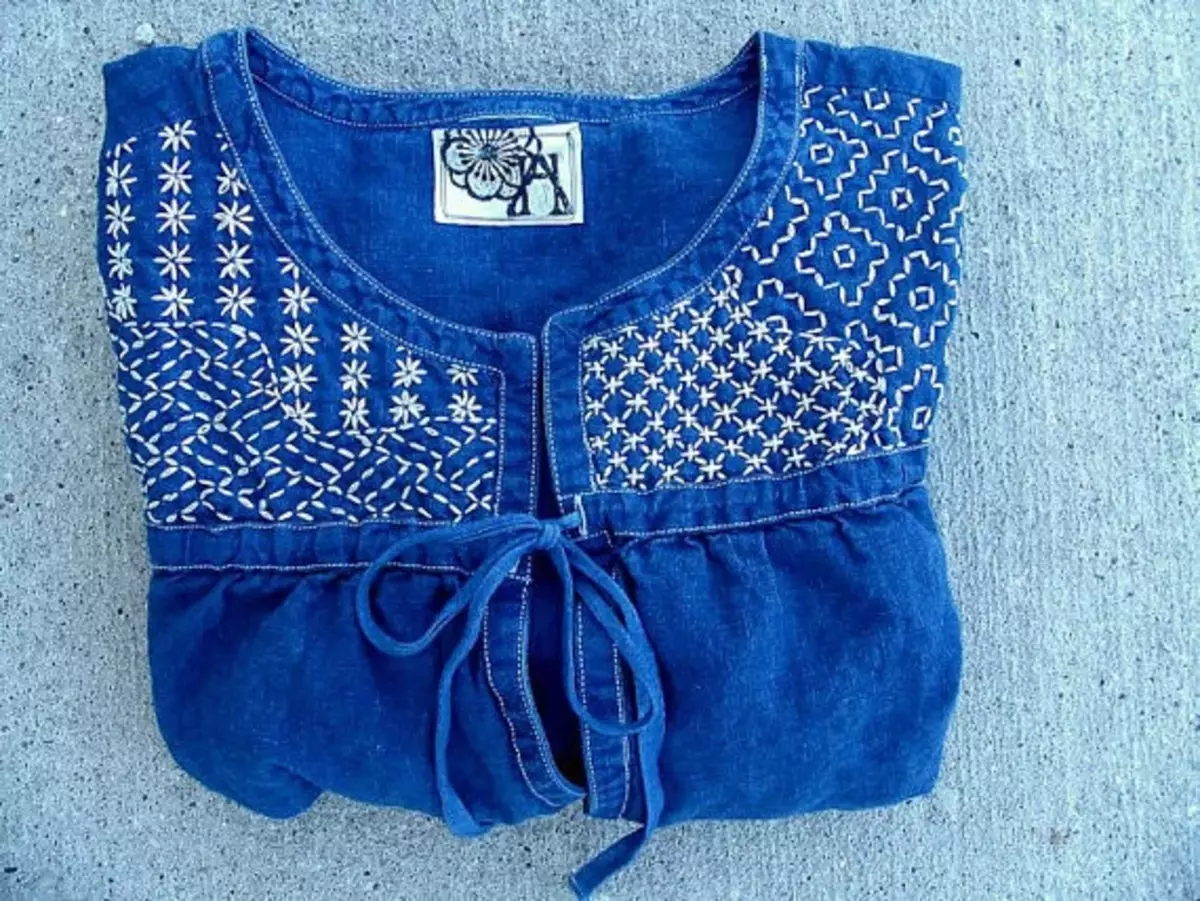Easy from the point of view of technology, the sophistication of the completed work and the simulation of the patterns make Sasisiko with a great way to decorate both interior items and clothing.
Of course, the feeling that even a child will cope with Sashiko - deceptively. This type of embroidery does not require specific knowledge and possessions of the secrets of needlework masters, but it will definitely require concentrations, accuracy and infinite patience. It is possible that in the process of work you will comprehend Zen, but this is just another reason to get involved in this beautiful and ancient type of embroidery.

You will need:
- Pattern scheme
- Copy paper (white, if you embroider on traditionally dark blue fabric)
- Needle (ideally, needle for Sashiko)
- Scotch
- Cotton Moulin
- thimble
Step 1
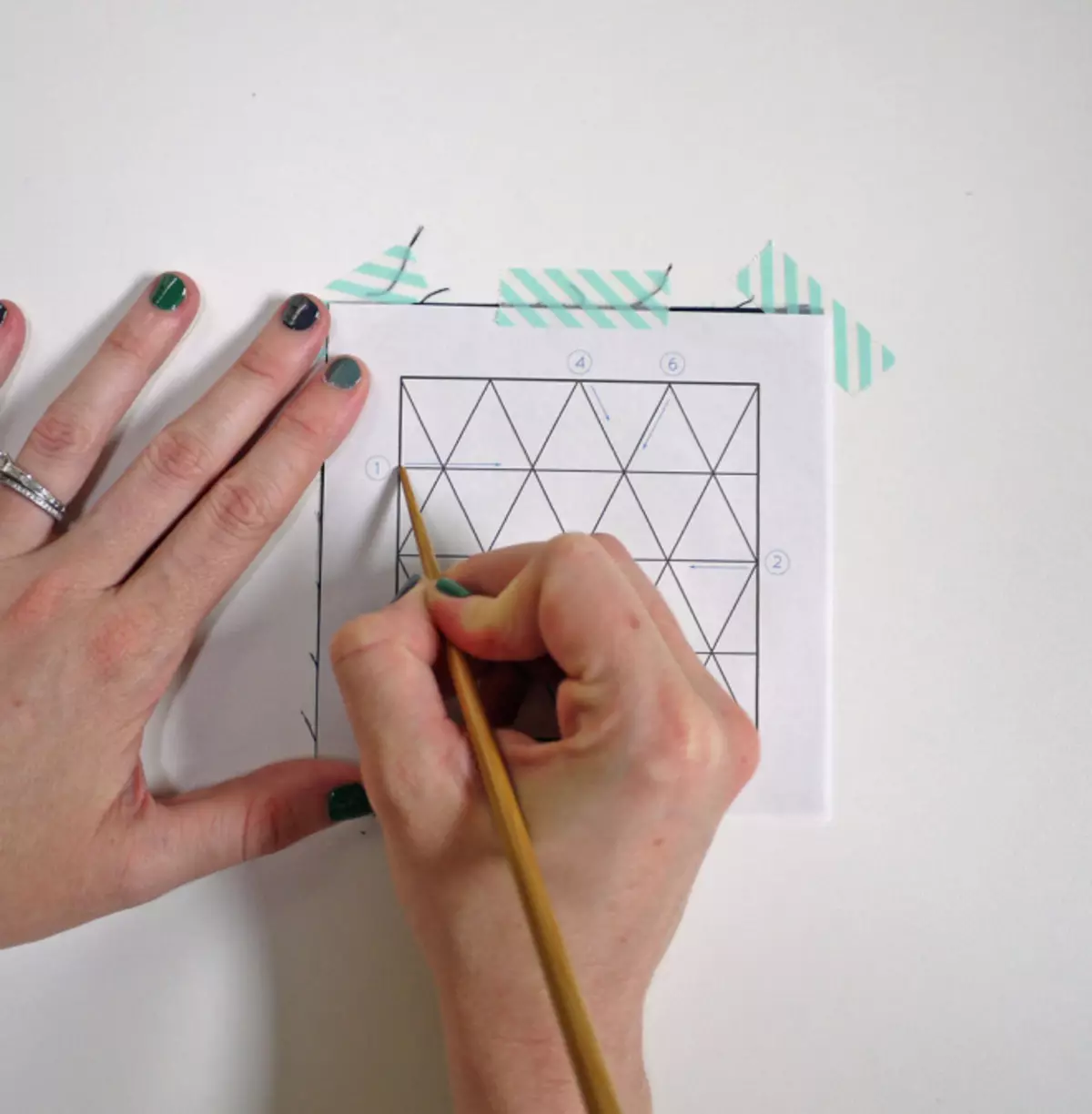
What kind of embroidery did not be speech, neat and accurate transfer to the fabric fabric or scheme is half of the success. You can use any convenient way to transfer the picture on the fabric, in this case uses white copy paper. For convenience, you can fix the part and the scotch and scheme to avoid displacement. Sashiko "will not forgive" inaccuracies, any incomprehension of the lines will rush into the eyes.
Step 2.
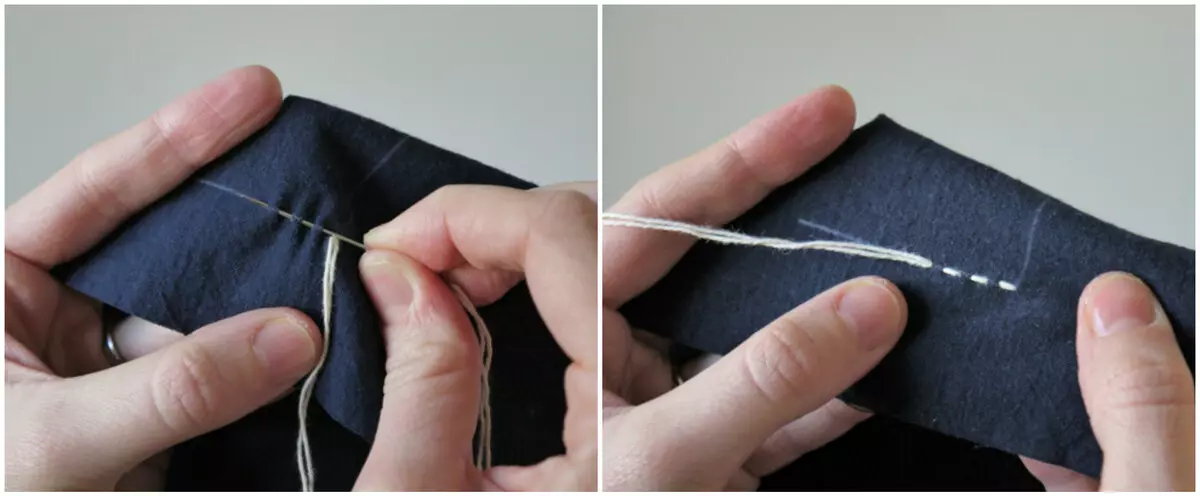
As a rule, Sasisiko is performed in one thread or two, if you need to add line thickness. If you embroider on the product, in which the extension is important, for example, the speed, then you should avoid nodes and use other ways to fix the thread. In the event that the exhaust does not matter much, the thread is fixed using an ordinary nodule.
Before starting, consider the pattern and appreciate the procedure. As a rule, the horizontal and vertical lines are first performed, and then packed stitches in the oblique direction, after which, if necessary, embroidered the frame.
The direct embroidery process is that you "stand" on the stitches needle according to the scheme approximately 3: 2 (long stitch, respectively, should go on the front side), without stretching the thread. "Having driven" stitches, push the needle with the help of thimble, so that the fabric does not frow. Stretching the thread, straighten and stretch the fabric to weaken the tension.
Having reached the end of the row, make the second knot, leaving a small margin to, first, compensate for the tension of the fabric, and secondly, in case shrinkage after washing.
Step 3.
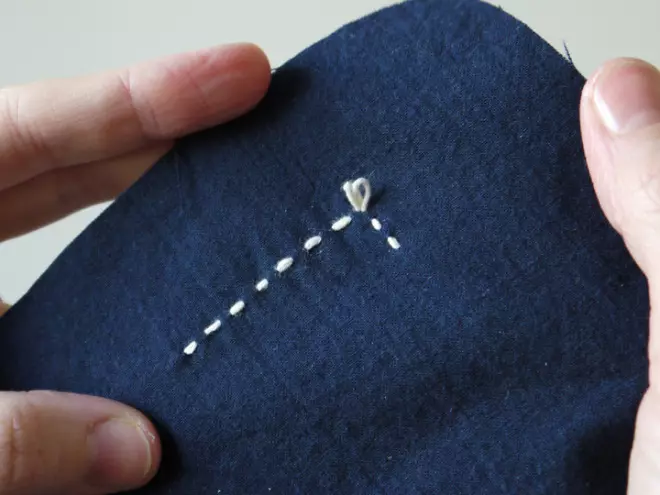
If you need to make a turn, leave a small loop on the wrong, again in order for the reserve for the case of need. In the same way, moving from one row to another, it is not necessary to bring the nodules each time, but it is necessary to leave the reserve loop. It will not be visible on the front side, and ultimately such "reserves" will protect your work from "waviness" and excessive tension.
The diagram below shows the most common difficulties of lines' dashes (the correct location of the stitches is presented from above, at the bottom - erroneous).
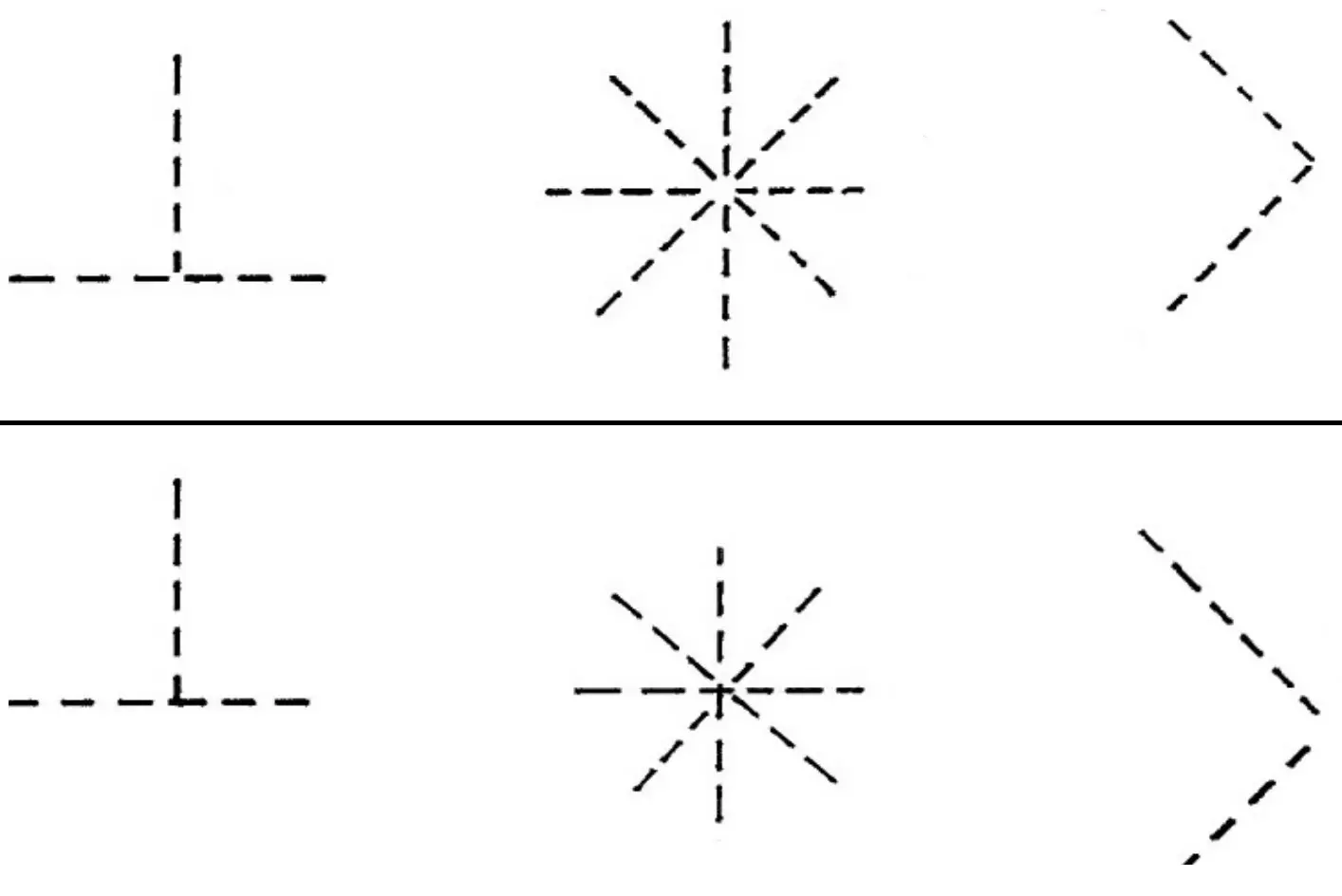
Source: SakePupPets.com
Photo: Pinterest.com.
Material prepared Nick Bazhanov




